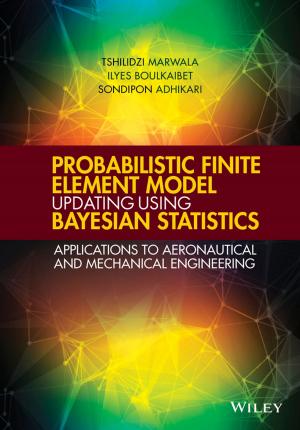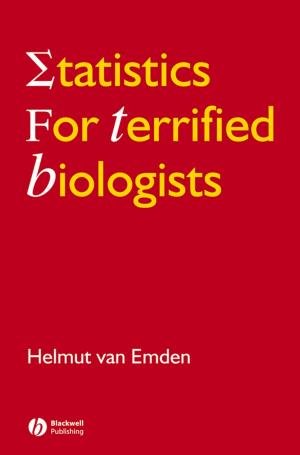Rhythms of Insect Evolution
Evidence from the Jurassic and Cretaceous in Northern China
Nonfiction, Science & Nature, Science, Earth Sciences, Palaeontology| Author: | ISBN: | 9781119428008 | |
| Publisher: | Wiley | Publication: | March 18, 2019 |
| Imprint: | Wiley-Blackwell | Language: | English |
| Author: | |
| ISBN: | 9781119428008 |
| Publisher: | Wiley |
| Publication: | March 18, 2019 |
| Imprint: | Wiley-Blackwell |
| Language: | English |
Documents morphology, taxonomy, phylogeny, evolutionary changes, and interactions of 23 orders of insects from the Middle Jurassic and Early Cretaceous faunas in Northern China
This book showcases 23 different orders of insect fossils from the Mid Mesozoic period (165 to 125 Ma) that were discovered in Northeastern China. It covers not only their taxonomy and morphology, but also their potential implications on natural sciences, such as phylogeny, function, interaction, evolution, and ecology. It covers fossil sites; paleogeology; co-existing animals and plants in well-balanced eco-systems; insects in the spotlight; morphological evolution and functional development; and interactions of insects with co-existing plants, vertebrates, and other insects. The book also includes many elegant and beautiful photographs, line drawings, and 3-D reconstructions of fossilized and extant insects.
Rhythms of Insect Evolution: Evidence from the Jurassic and Cretaceous in Northern China features chapter coverage of such insects as the: Ephemeroptera; Odonata; Blattaria; Isoptera; Orthoptera; Notoptera; Dermaptera; Chresmodidae; Phasmatodea; Plecoptera; Psocoptera; Homoptera; Heteroptera; Megaloptera; Raphidioptera; Neuroptera; Coleoptera; Hymenoptera Diptera; Mecoptera; Siphonaptera; Trichoptera and Lepidoptera.
- Combines academic natural science, popular science, and artistic presentation to illustrate rhythms of evolution for fossil insects from the Mid Mesozoic of Northern China
- Documents morphology, taxonomy, phylogeny, and evolutionary changes of 23 orders of insects from the Middle Jurassic and Early Cretaceous faunas in Northern China
- Presents interactions of insects with plants, vertebrates, and other insects based on well-preserved fossil evidence
- Uses photos of extant insects and plants, fossil and amber specimens, line drawings, and 3-D computer-generated reconstruction artworks to give readers clear and enjoyable impressions of the scientific findings
- Introduces insect-related stories from western and Chinese culture in text or sidebars to give global readers broader exposures
Rhythms of Insect Evolution: Evidence from the Jurassic and Cretaceous in Northern China will appeal to entomologists, evolutionists, paleontologists, paleoecologists, and natural scientists.
Documents morphology, taxonomy, phylogeny, evolutionary changes, and interactions of 23 orders of insects from the Middle Jurassic and Early Cretaceous faunas in Northern China
This book showcases 23 different orders of insect fossils from the Mid Mesozoic period (165 to 125 Ma) that were discovered in Northeastern China. It covers not only their taxonomy and morphology, but also their potential implications on natural sciences, such as phylogeny, function, interaction, evolution, and ecology. It covers fossil sites; paleogeology; co-existing animals and plants in well-balanced eco-systems; insects in the spotlight; morphological evolution and functional development; and interactions of insects with co-existing plants, vertebrates, and other insects. The book also includes many elegant and beautiful photographs, line drawings, and 3-D reconstructions of fossilized and extant insects.
Rhythms of Insect Evolution: Evidence from the Jurassic and Cretaceous in Northern China features chapter coverage of such insects as the: Ephemeroptera; Odonata; Blattaria; Isoptera; Orthoptera; Notoptera; Dermaptera; Chresmodidae; Phasmatodea; Plecoptera; Psocoptera; Homoptera; Heteroptera; Megaloptera; Raphidioptera; Neuroptera; Coleoptera; Hymenoptera Diptera; Mecoptera; Siphonaptera; Trichoptera and Lepidoptera.
- Combines academic natural science, popular science, and artistic presentation to illustrate rhythms of evolution for fossil insects from the Mid Mesozoic of Northern China
- Documents morphology, taxonomy, phylogeny, and evolutionary changes of 23 orders of insects from the Middle Jurassic and Early Cretaceous faunas in Northern China
- Presents interactions of insects with plants, vertebrates, and other insects based on well-preserved fossil evidence
- Uses photos of extant insects and plants, fossil and amber specimens, line drawings, and 3-D computer-generated reconstruction artworks to give readers clear and enjoyable impressions of the scientific findings
- Introduces insect-related stories from western and Chinese culture in text or sidebars to give global readers broader exposures
Rhythms of Insect Evolution: Evidence from the Jurassic and Cretaceous in Northern China will appeal to entomologists, evolutionists, paleontologists, paleoecologists, and natural scientists.















